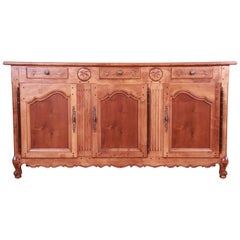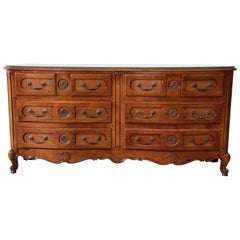Henredon Pierre Deux
Mid-20th Century North American French Provincial Sideboards
Wood
Recent Sales
Late 20th Century American French Provincial Sideboards
Brass
Late 20th Century American French Provincial Dressers
Cherry
Late 20th Century American French Provincial Night Stands
Cherry
Late 20th Century American French Provincial Sideboards
Cherry
Late 20th Century American French Provincial Armchairs
Textile, Wood
People Also Browsed
Early 20th Century French French Provincial Night Stands
Walnut
Late 20th Century American Georgian Beds and Bed Frames
Brass
Antique 19th Century French French Provincial Sideboards
Wood
21st Century and Contemporary Bergere Chairs
Linen
Vintage 1920s French French Provincial Buffets
Walnut
Antique 18th Century French Louis XV Sideboards
Marble
2010s Regency Sideboards
Mahogany
Antique 19th Century French Louis XV Sideboards
Brass
Antique 19th Century French Sideboards
Oak
Antique Late 18th Century French French Provincial Sideboards
Walnut
Antique 18th Century French Louis XV Credenzas
Marble, Brass, Iron
Early 20th Century French French Provincial Sideboards
Marble
20th Century French French Provincial Buffets
Cherry
Henredon for sale on 1stDibs
Founded in 1945, Henredon is one of the more recently minted of the top-tier North Carolina furniture makers. Among collectors, Henredon is admired both for its sleek, sexy sofas, dining tables and other furniture of the 1970s and for its partnerships with noted designers, a program that began in the 1950s with decorating icon Dorothy Draper and architect Frank Lloyd Wright.
From the start, Henredon has been best known for its bedroom furniture and vintage case pieces, such as cabinets, dressers, armoires and credenzas. The brand was established in Morganton by former Drexel Furniture Company executives, and its name is a portmanteau term, derived from the first names of three of the company’s founders — T. Henry Wilson, Ralph Edwards and Don VanNoppen. (Sterling Collett, a fourth figure mentioned in Henredon Furniture’s history, chaired the company and served as treasurer).
Though not on the cutting edge stylistically, Henredon’s production — as well as its output under the Heritage-Henredon label — has always kept pace with contemporary tastes.
In 1953, High Point manufacturer Heritage began a collaboration with Dorothy Draper, famed for bravura interior design commissions such as the Fairmont Hotel in San Francisco and the Greenbrier resort in West Virginia. Her taste for bold, modernized historical style is reflected in the incised baroque medallions of her España line and the geometric motif of her Viennese furnishings group. In 1955, Henredon launched the Taliesin Ensemble by Wright, named after the architect’s houses in Wisconsin and Arizona. Taliesin dressers and coffee tables are recognizable by their angular shapes and a dentil motif on their edges. In those years, Henredon had a cross-licensing agreement with Heritage, and Draper and Wright's furniture is usually labeled Heritage-Henredon.
In later decades, Henredon produced collections for such designers as Ralph Lauren and Laura Ashley. The company took a stylish turn in the 1970s, fabricating new and unusual forms like mirrored room dividers and console tables with rounded corners and burl-wood veneers. Such pieces are priced in the $3,000 to $4,000 range, as are chests of drawers by Draper. Wright furniture tends toward the higher end, priced around $7,000. Henredon was an aesthetically diverse maker, but its furniture commands attention and makes a statement in any eclectic decor.
The vintage Henredon furniture for sale on 1stDibs includes bedroom furniture, coffee tables, chairs and other pieces.
A Close Look at French-provincial Furniture
Removed from the fashions of the court, French Provincial style developed in the provinces of the country, such as Provence, Normandy, the Loire Valley and Bordeaux. Dating to the 17th and 18th centuries, French Provincial furniture was not as ostentatious as the designs being produced for the royal palaces, but elegant S-shape cabriole legs and ornate carvings elevated the sturdy chairs, sofas, tables and bedroom furniture intended for everyday use.
Although it varies by region, antique French Provincial furniture is unified by solid construction and an artisanal attention to design. While this furniture often followed the metropolitan trends — including the Rococo or neoclassical aesthetics of Louis XIV, Louis XV and Louis XVI — since it was produced in the French countryside it was more subdued with nods to its rustic settings.
Local materials like fruitwoods, oak, beech and walnut were used to construct large French Provincial armoires for storage and comfortable armchairs with rush-woven seats. Wrought-iron elements and carvings like floral details and scallop patterns were common as ornamentation. Furniture was frequently painted white or other muted colors that coordinated with gilt and would acquire a patina of age over time. Other wood was just stained with vibrant fabric such as toile de Jouy, which sometimes depicted pastoral scenes, adding color as upholstery.
The style arrived in the United States after World War I, with soldiers returning home wanting furniture like what they had seen in the rural homes and castles of France. In Grand Rapids, Michigan, designer John Widdicomb split from his family business, the Widdicomb Furniture Company, and had been focusing on Louis XV– and French Provincial–style furnishings since the early 1900s. Other American manufacturers such as Baker, Drexel, Henredon and Thomasville also responded to demand. Today antique French Provincial pieces and reproductions continue to be popular.
Find a collection of antique French Provincial dining tables, seating, decorative objects and other furniture on 1stDibs.
Finding the Right Case Pieces And Storage Cabinets for You
Of all the vintage storage cabinets and antique case pieces that have become popular in modern interiors over the years, dressers, credenzas and cabinets have long been home staples, perfect for routine storage or protection of personal items.
In the mid-19th century, cabinetmakers would mimic styles originating in the Louis XIV, Louis XV and Louis XVI eras for their dressers, bookshelves and other structures, and, later, simpler, streamlined wood designs allowed these “case pieces” or “case goods” — any furnishing that is unupholstered and has some semblance of a storage component — to blend into the background of any interior.
Mid-century modern furniture enthusiasts will cite the tall modular wall units crafted in teak and other sought-after woods of the era by the likes of George Nelson, Poul Cadovius and Finn Juhl. For these highly customizable furnishings, designers of the day delivered an alternative to big, heavy bookcases by considering the use of space — and, in particular, walls — in new and innovative ways. Mid-century modern credenzas, which, long and low, evolved from tables that were built as early as the 14th century in Italy, typically have no legs or very short legs and have grown in popularity as an alluring storage option over time.
Although the name immediately invokes images of clothing, dressers were initially created in Europe for a much different purpose. This furnishing was initially a flat-surfaced, low-profile side table equipped with a few drawers — a common fixture used to dress and prepare meats in English kitchens throughout the Tudor period. The drawers served as perfect utensil storage. It wasn’t until the design made its way to North America that it became enlarged and equipped with enough space to hold clothing and cosmetics. The very history of case pieces is a testament to their versatility and well-earned place in any room.
In the spirit of positioning your case goods center stage, decluttering can now be design-minded.
A contemporary case piece with open shelving and painted wood details can prove functional as a storage unit as easily as it can a room divider. Alternatively, apothecary cabinets are charming case goods similar in size to early dressers or commodes but with uniquely sized shelving and (often numerous) drawers.
Whether you’re seeking a playful sideboard that features colored glass and metal details, an antique Italian hand-carved storage cabinet or a glass-door vitrine to store and show off your collectibles, there are options for you on 1stDibs.


